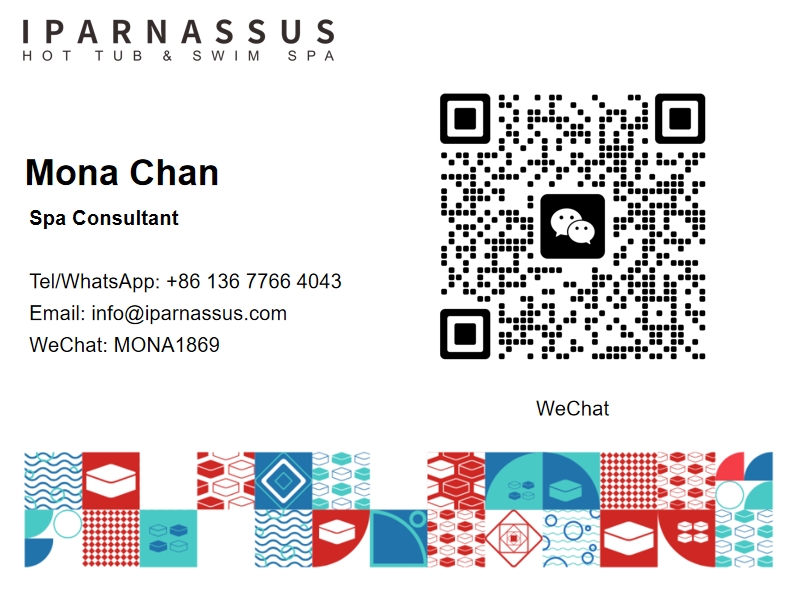Do Hot Tubs Help with Inflammation?
2024-09-26 09:43:43
Inflammation is a common issue that affects many people, causing discomfort and sometimes chronic pain. As individuals seek natural and enjoyable ways to alleviate these symptoms, hot tubs have gained attention for their potential therapeutic benefits. The question arises: do hot tubs actually help with inflammation? This blog post will explore the relationship between hot tub use and inflammation reduction, examining the potential benefits and mechanisms behind this popular form of hydrotherapy.
Are outdoor hot tubs good for arthritis?
Arthritis is a condition characterized by inflammation in the joints, causing pain, stiffness, and reduced mobility. For many arthritis sufferers, finding relief from these symptoms is a top priority. Outdoor hot tubs have emerged as a potential solution, offering a combination of heat therapy, buoyancy, and gentle massage that may help alleviate arthritis-related discomfort.
The warm water in a hot tub can help increase blood circulation throughout the body, including to inflamed joints. This improved blood flow can bring more oxygen and nutrients to affected areas, potentially reducing inflammation and promoting healing. The heat also helps to relax muscles and reduce stiffness, which can be particularly beneficial for those with arthritis.
Moreover, the buoyancy of water in a hot tub reduces the weight-bearing load on joints, providing a sense of weightlessness that can offer temporary relief from the constant pressure experienced by arthritic joints. This reduction in pressure can allow for greater range of motion and less pain during movement.
The gentle massage provided by hot tub jets can also play a role in arthritis management. The pulsating water can help to stimulate the release of endorphins, the body's natural pain-relieving chemicals, while also promoting muscle relaxation. This combination of effects can contribute to an overall reduction in pain and discomfort associated with arthritis.
It's important to note that while many arthritis sufferers report significant benefits from using outdoor hot tubs, the effects can vary from person to person. Factors such as water temperature, duration of use, and individual health conditions can all influence the effectiveness of hot tub therapy for arthritis. As with any treatment, it's advisable to consult with a healthcare professional before incorporating hot tub use into an arthritis management plan.
For those who do find relief through hot tub use, consistency is key. Regular sessions in an outdoor hot tub, combined with other arthritis management strategies recommended by healthcare providers, may contribute to improved quality of life and better management of arthritis symptoms over time.
How long should you stay in an outdoor hot tub?
When it comes to using an outdoor hot tub for inflammation relief or general relaxation, finding the right balance in terms of duration is crucial. The ideal length of time to spend in a hot tub can vary depending on several factors, including personal health conditions, water temperature, and individual tolerance levels.
Generally, most experts recommend limiting hot tub sessions to no more than 15-30 minutes at a time. This duration allows for the therapeutic benefits of heat and hydrotherapy without risking overexposure or dehydration. However, it's essential to listen to your body and adjust the time accordingly.
For those using hot tubs specifically for inflammation relief, shorter, more frequent sessions may be more beneficial than extended soaks. Starting with 10-15 minute sessions and gradually increasing the duration as tolerated can help maximize the anti-inflammatory benefits while minimizing any potential risks.
Water temperature plays a significant role in determining how long one should stay in a hot tub. The U.S. Consumer Product Safety Commission recommends that hot tub water temperatures should not exceed 104°F (40°C) for adults. At this temperature, most healthy adults should limit their time to 15-20 minutes. If the water temperature is lower, around 98-100°F (36.7-37.8°C), it may be safe to extend the session to 30 minutes or slightly longer.
It's important to pay attention to how you feel during and after your hot tub session. Signs that it's time to exit the hot tub include feeling lightheaded, dizzy, or excessively hot. These symptoms can indicate overheating or dehydration, which can be counterproductive to the goal of reducing inflammation.
For those with specific health conditions, such as cardiovascular issues or pregnancy, it's crucial to consult with a healthcare provider for personalized recommendations on hot tub use duration. These individuals may need to limit their time in the hot tub or adjust the water temperature to ensure safety.
To maximize the benefits of hot tub use for inflammation while ensuring safety, consider the following tips:
1. Start with shorter sessions and gradually increase duration as tolerated.
2. Stay hydrated by drinking water before, during, and after hot tub use.
3. Monitor the water temperature and adjust it to a comfortable level.
4. Take breaks if you feel overheated, allowing your body to cool down before re-entering.
5. Use the hot tub at cooler times of the day, such as early morning or evening, to prevent overheating.
6. Incorporate gentle stretches or movements while in the hot tub to enhance circulation and flexibility.
By following these guidelines and listening to your body, you can find the optimal duration for your hot tub sessions, maximizing the potential anti-inflammatory benefits while ensuring a safe and enjoyable experience.
Can an outdoor hot tub help with muscle recovery?
The use of outdoor hot tubs for muscle recovery has gained popularity among athletes, fitness enthusiasts, and individuals dealing with muscle soreness or tension. The question of whether hot tubs can effectively aid in muscle recovery is an important one, as proper recovery is crucial for maintaining physical health and improving performance.
Hot tubs offer several mechanisms that can potentially contribute to muscle recovery. The combination of heat, buoyancy, and hydrostatic pressure creates an environment that may accelerate the recovery process and alleviate muscle soreness.
One of the primary ways hot tubs aid in muscle recovery is through increased blood circulation. The warm water causes blood vessels to dilate, improving blood flow throughout the body. This enhanced circulation helps deliver more oxygen and nutrients to tired or damaged muscles, potentially speeding up the repair process. Additionally, improved blood flow can help remove metabolic waste products, such as lactic acid, which accumulate in muscles during intense physical activity and contribute to soreness.
The buoyancy provided by the water in a hot tub can also play a significant role in muscle recovery. When immersed in water, the body experiences a reduction in gravitational forces, which decreases the load on joints and muscles. This weightless sensation can help relax tense muscles and reduce overall physical stress on the body. For individuals recovering from intense workouts or those with chronic muscle tension, this aspect of hot tub therapy can be particularly beneficial.
Hydrostatic pressure, the force exerted by water on immersed objects, is another factor that contributes to the muscle recovery benefits of hot tubs. This pressure can help reduce swelling and inflammation in muscles and joints by assisting in the movement of fluids in the body. The gentle compression provided by the water can also help massage muscles, promoting relaxation and potentially reducing muscle soreness.
The heat from the hot tub can induce a mild form of heat stress on the body, which has been shown to have potential benefits for muscle recovery. This controlled exposure to heat can stimulate the production of heat shock proteins, which play a role in cellular repair and protection against further damage. Moreover, the warmth can help increase the flexibility of connective tissues, potentially reducing the risk of injury and improving overall muscle function.
For athletes and active individuals, incorporating hot tub sessions into their recovery routine may help reduce delayed onset muscle soreness (DOMS). This type of soreness typically occurs 24-48 hours after intense exercise and can significantly impact performance and comfort. Regular use of a hot tub, especially after strenuous workouts, may help mitigate the severity and duration of DOMS.
It's worth noting that the timing of hot tub use can impact its effectiveness for muscle recovery. While some prefer to use a hot tub immediately after exercise to relax muscles and promote blood flow, others find it more beneficial to wait several hours or use it on rest days. Experimenting with different timings can help individuals determine what works best for their recovery needs.
To maximize the muscle recovery benefits of outdoor hot tub use, consider the following strategies:
1. Use the hot tub after cool-down exercises to help transition the body from an active state to recovery.
2. Incorporate gentle stretches while in the hot tub to enhance flexibility and promote muscle relaxation.
3. Alternate between hot tub sessions and cold water immersion (contrast therapy) for potential additional recovery benefits.
4. Stay hydrated before, during, and after hot tub use to support the body's recovery processes.
5. Use the jets to target specific muscle groups that need attention, creating a gentle massage effect.
While the potential benefits of hot tubs for muscle recovery are promising, it's important to remember that they should be part of a comprehensive recovery strategy. Proper nutrition, adequate sleep, and appropriate rest periods between intense physical activities are all crucial components of effective muscle recovery.
In conclusion, outdoor hot tubs offer a combination of heat therapy, buoyancy, and hydrostatic pressure that can potentially aid in muscle recovery. By improving circulation, reducing physical stress on the body, and promoting relaxation, hot tubs may help accelerate the recovery process and alleviate muscle soreness. As with any recovery method, individual responses may vary, and it's advisable to listen to your body and consult with healthcare or fitness professionals when incorporating hot tub use into your muscle recovery routine.
For more information on hot tub installations and our products, please feel free to contact us at info@iparnassus.com.
References
1. Becker, B. E. (2009). Aquatic therapy: Scientific foundations and clinical rehabilitation applications. PM&R, 1(9), 859-872.
2. Mooventhan, A., & Nivethitha, L. (2014). Scientific evidence-based effects of hydrotherapy on various systems of the body. North American Journal of Medical Sciences, 6(5), 199.
3. Versey, N. G., Halson, S. L., & Dawson, B. T. (2013). Water immersion recovery for athletes: Effect on exercise performance and practical recommendations. Sports Medicine, 43(11), 1101-1130.
4. Goto, K., Oda, H., Kondo, H., Igaki, M., Suzuki, A., & Tsuchiya, S. (2011). Responses of muscle mass, strength and gene transcripts to long-term heat stress in healthy human subjects. European Journal of Applied Physiology, 111(1), 17-27.
5. Wilcock, I. M., Cronin, J. B., & Hing, W. A. (2006). Physiological response to water immersion. Sports Medicine, 36(9), 747-765.
6. Vaile, J., Halson, S., Gill, N., & Dawson, B. (2008). Effect of hydrotherapy on the signs and symptoms of delayed onset muscle soreness. European Journal of Applied Physiology, 102(4), 447-455.
7. Higgins, T. R., Greene, D. A., & Baker, M. K. (2017). Effects of cold water immersion and contrast water therapy for recovery from team sport: A systematic review and meta-analysis. The Journal of Strength & Conditioning Research, 31(5), 1443-1460.
8. Nadler, S. F., Weingand, K., & Kruse, R. J. (2004). The physiologic basis and clinical applications of cryotherapy and thermotherapy for the pain practitioner. Pain Physician, 7(3), 395-399.
9. Brunt, V. E., Howard, M. J., Francisco, M. A., Ely, B. R., & Minson, C. T. (2016). Passive heat therapy improves endothelial function, arterial stiffness and blood pressure in sedentary humans. The Journal of Physiology, 594(18), 5329-5342.
10. Kunutsor, S. K., Mäkikallio, T. H., Kauhanen, J., Voutilainen, A., Jae, S. Y., Dey, R. S., ... & Laukkanen, J. A. (2018). Leisure-time cross-country skiing is associated with lower incidence of hypertension: a prospective cohort study. Journal of Hypertension, 36(6), 1244-1251.



